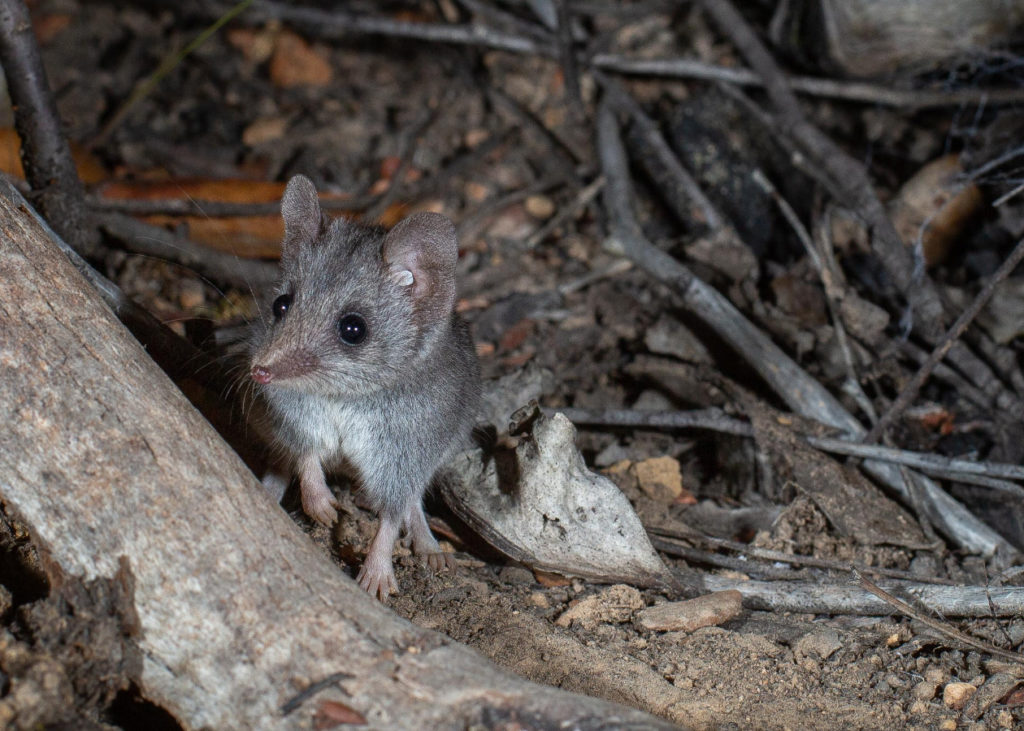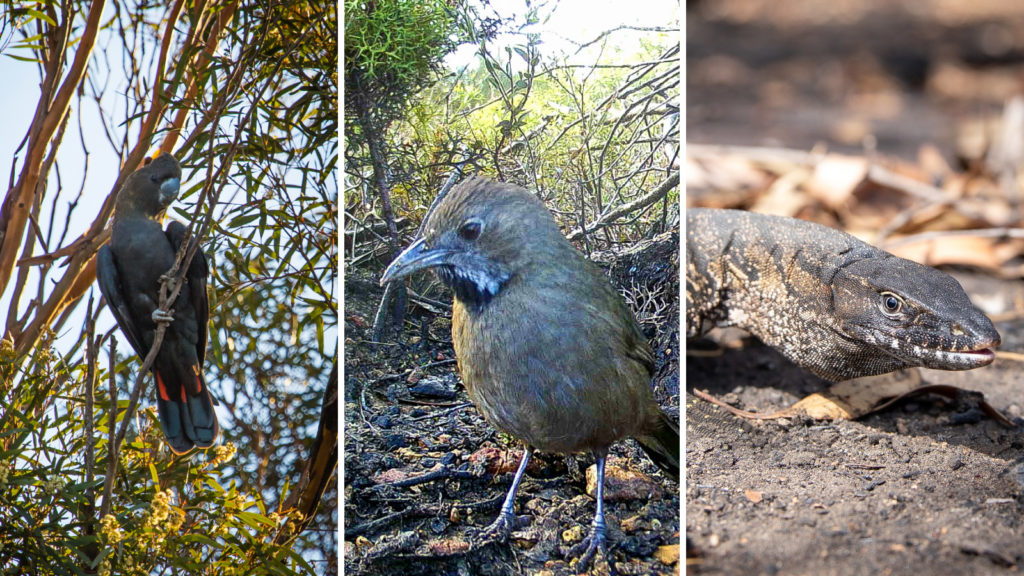The new Western River Refuge on Kangaroo Island was launched today by South Australian Minister for Environment and Water, David Speirs, securing a critical haven for ecosystem bushfire recovery on the island.
The Western River Refuge, an Australian Wildlife Conservancy (AWC), Kangaroo Island Land for Wildlife (KI LfW) and private landholder jointly managed property, now protects over 369 hectares of critical habitat for threatened species. The refuge is also helping save Australia’s most endangered mammal, the Kangaroo Island Dunnart (KI Dunnart).
The partnership between AWC, KI LfW and local landholders (the Doube family) constructed the 8.8km long feral-predator fence in the Western River area of Kangaroo Island. AWC and KI LfW feral animal control land managers have also been working together to control feral cats since the end of January 2020.
The project has received generous financial support from AWC’s New South Wales based partners, WIRES Australian Wildlife Rescue Organisation, and international grant-maker, Fondation Segré.
 © Brad Leue/AWC
© Brad Leue/AWC
Minister for the Environment and Water, David Speirs congratulated the partnership for its rapid, scientific response to the bushfires.
“Australian Wildlife Conservancy and Kangaroo Island Land for Wildlife have done a tremendous job helping secure the future of our threatened species,” Speirs said. “The quick pace of the fence construction has provided critical refuge for our wildlife from feral predators and the land management has helped provide protection that will allow many native species to survive.”
According to AWC CEO, Tim Allard, AWC ecologists have supported the KI LfW team to establish threatened species surveys across burnt and unburnt private properties to locate additional populations of the Kangaroo Island Dunnart and other threatened species.
 © Brad Leue/AWC
© Brad Leue/AWC
“The bushfires were devastating and destroyed so many critical habitats leaving our wildlife threatened and vulnerable,” Allard said. “As Kangaroo Island Land for Wildlife had already undertaken extensive planning for the construction of the Western River Refuge, we were able to quickly establish a 13.6-hectare feral predator-free exclosure, which, thanks to the support of the Australian Army and many volunteers, was constructed in a record six weeks.”
“All of Australia can take hope from the recovery and resilience our beloved bush has shown just 12 months after the fires,” Allard said. “The generosity of local land-holders and our partners and supporters has secured over 369 hectares which is allowing Australia’s most endangered mammal, the Kangaroo Island Dunnart to survive and thrive.”
“Our ecologists have been working hard to secure a viable population of the species within the refuge and we’re delighted that they are now breeding and doing well,” Allard said.
Pat Hodgens, Field Ecologist for KI LfW, and Kangaroo Island resident, has witnessed first-hand the devastation and recovery that has shaped the last year on the island.
“We are grateful for the support provided by AWC through WIRES fire recovery funding and other financial supporters,” Hodgens said. “This collaboration has created the Western River Refuge and together we have protected a number of threatened species.”
 © Brad Leue/AWC
© Brad Leue/AWC
Some of the other fire affected priority species being protected by the Wester River Refuge include: endangered Kangaroo Island Echidna, vulnerable Bassian Thrush, near-threatened Western Whipbird, vulnerable Heath Goanna, endangered Southern Emu-wren, and endangered Southern Brown Bandicoot.
Feral cats are the major cause for mammal extinction in Australia and their occurrence on Kangaroo Island is a significant threat to local wildlife. The bushfires have left them even more vulnerable with the loss of vegetation and habitat to take shelter in. AWC research has shown that native animals are more susceptible to predators in the aftermath of intense fires, and that cats can hunt more efficiently in post-fire landscapes. Around Australia, cats kill around over one million native mammals, two million reptiles and one million birds every night.
The recent report of the inquiry into the environmental impact of feral cats by the House of Representatives Standing Committee on the Environment and Energy said: “Predator-free fencing is considered an effective technique against feral animals and provides native animal populations with a safe and secure environment within which to be reintroduced without the threat of predation.”
The Committee also recommended: “the Australian Government spearhead, in partnership with the states and territories, an expansion of Australia’s network of predator-free safe-haven enclosures and feral cat-free islands.”
This report highlights the criticality of the 8.8km long feral-predator fence that borders the Western River Refuge to ensure thriving and safe populations until the island habitat recovers and the threat to extinction abates.
For further information, please contact:
Joey Clarke. M: 0423 072 290. E: joey.clarke@australianwildlife.org
Western River Refuge and Kangaroo Island Dunnart footage available.